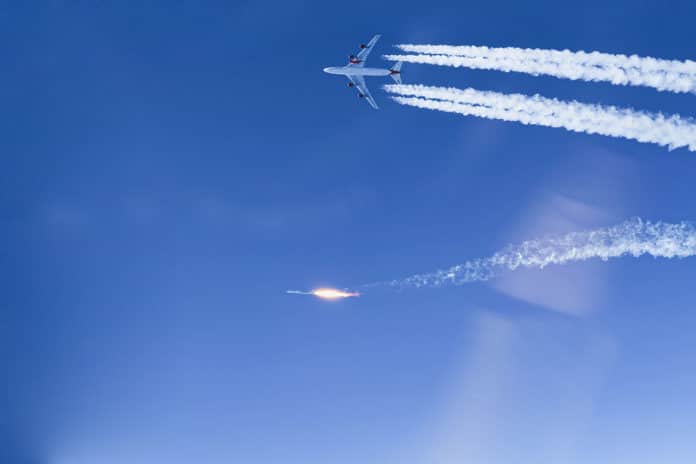Richard Branson’s company Virgin Orbit successfully launched its LauncherOne rocket into space from under the wing of a jet aircraft for the first time. It deployed ten payloads for NASA’s Launch Services Program (LSP), paving the way for a new way to place small satellites into orbit. This was Virgin Orbit’s second attempt, after a failed test in May.
The aircraft took off from the Mojave Air and Space Port, in the desert north of Los Angeles (California, United States) and fired its rocket over the Pacific. After a smooth release from the aircraft, the two-stage rocket ignited and powered itself to orbit. At the conclusion of the flight, the LauncherOne rocket deployed 10 CubeSats into the team’s precise target orbit.
“Virgin Orbit has achieved something many thought impossible. It was so inspiring to see our specially adapted Virgin Atlantic 747, Cosmic Girl, send the LauncherOne rocket soaring into orbit,” said Virgin Group founder Sir Richard Branson. “This magnificent flight is the culmination of many years of hard work and will also unleash a whole new generation of innovators on the path to orbit. I can’t wait to see the incredible missions Dan and the team will launch to change the world for good.”
Founded by British billionaire Richard Branson in 2012, Virgin Orbit aims to provide a fast and adaptable space launch service for small satellites weighing between 300 and 500 kg, a growing market. The 21-meter Virgin Orbit rocket, dubbed LauncherOne, does not take off vertically but is secured under the wing of a modified Boeing 747 called “Cosmic Girl”. Once the correct altitude is reached, the plane releases the rocket, which starts its own engine to push itself into space and place its cargo into orbit.
Launching a rocket from an airplane is simpler than a vertical takeoff because, theoretically, a simple runway is enough, instead of an expensive launch pad on the ground.
Besides, Richard Branson has created another space company, Virgin Galactic, which aims to send tourists into space to experience weightlessness some 80 km from the Earth’s surface.
